If you want to learn how to surf quickly in a practical way, this article is for you!
Surfing is one of the most difficult and complex sports in the world, but also one of the most satisfying.
No wave is the same as the previous one, so the surface where you surf constantly changes.
Elements such as the tide, the wind and the waves always in the waves, and that makes you surf different every day.
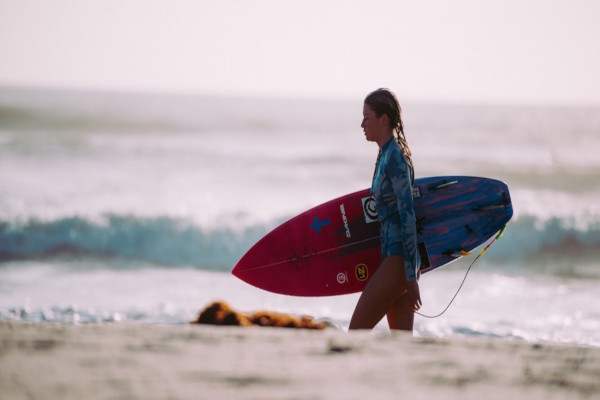
Although the process of learning to surf involves effort and practice, if you follow these tips you will achieve it quickly and efficiently.
Surf learning tip # 1- Surf with the proper surfboard
Surfing with the proper surfboard is very important and can make the difference between surfing 20 waves or zero waves in one day of surfing.
Volume and shape
It’s not about having the newest surfboard on the market. It’s mainly about having the board with the right volume and curvature for you.
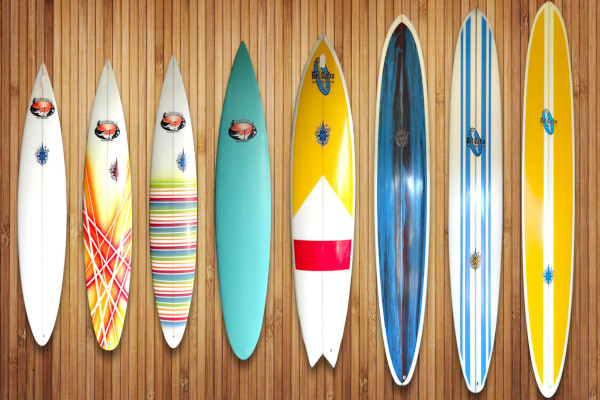
The Volume is what defines the buoyancy of your board. It depends on the length, width and thickness of the surfboard from its nose to its tail.
If you want a lot of volume, go for large surfboards or long boards.
They can also be foam boards, which are wide, thick and long, and have a flat rocker.
Rocker refers to the banana shape of your surfboard, which has great performance advantages for experienced surfers.
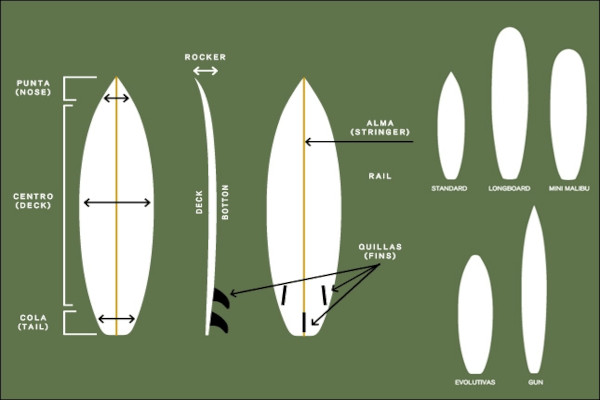
In the case of surfers just learning, lack of practice in using the rocker can slow you down.
The leash
Make sure you have a leash that sticks well to your surfboard.
The leash of the surfboard is a section that can be made of different types of materials, and serves to connect the surfer with the board, without it getting lost during a surf session. It also helps to keep the surfer’s hands free.
In the past, surfboards weren’t leashed, and surfers spent a lot of time trying to retrieve their board, during a session.
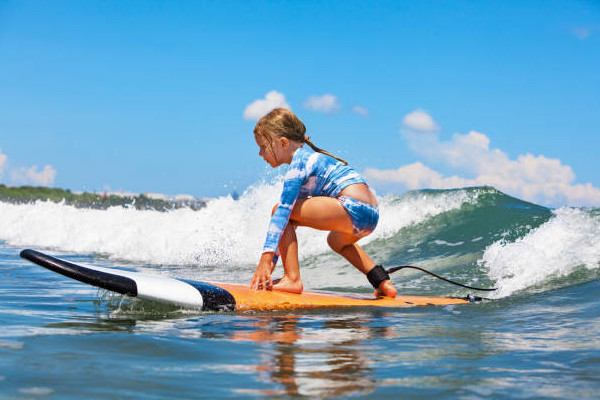
The wetsuit
If necessary, get a wetsuit for the water.
It all depends on the temperature of the place where you are going to surf. There are surf spots whose waters are quite cold, and if you are going to spend a lot of time wet, a wetsuit will be an excellent ally.
Brush your surfboard
You may also need to brush your surfboard if the top is slippery.
This will help you stay steady on your surfboard.
Putting the right wax
There is wax for cold water, soft water and warm water. Your surfboard must have fins underneath
from the tail. This will provide direction for your surfboard in the water.
The Fins
Your surfboard must have fins. Without fins it is very difficult to brake, control and steer your surfboard.
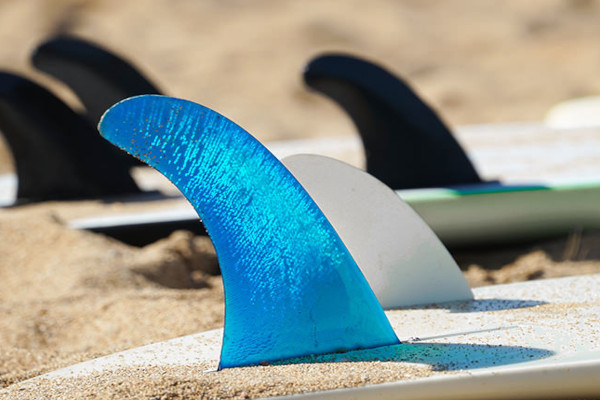
Tip to learn surfing # 2-Choose the right surf spot for you
Choosing the right spot to surf is crucial both for your safety and for your enjoyment in the water.
A common misconception is that beaches with sandy bottoms are better for beginners and places with rocks or coral reef bottoms are better for advanced surfers.
There are actually sandy beaches that are better for advanced surfers and some reefs that are good for beginners.
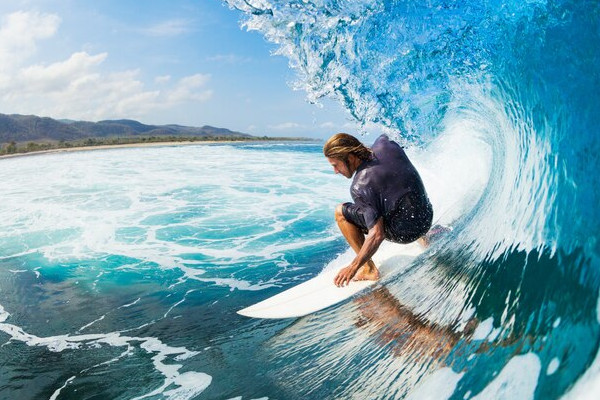
For example, on some beaches, although the bottom is made of sand, it may not have good conditions for learning.
If you want to know if a beach has good conditions for learning, you should not only look at the beach, but you should also pay attention to the conditions of the waves for that day.
Some beaches can be great for learning to surf one day, and not the next.
When the waves are too big, that same beach could be recommended only for more experienced surfers.
You can ask any experienced friend.
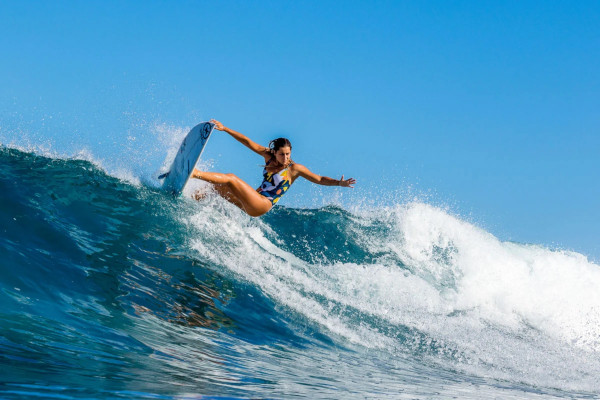
Surf learning tip # 3- Learn about safety aspects
Before going to the beach you should learn some basic aspects of surfing safety.
These are the most important security aspects that you must take into account.
Always ask yourself this question: Is this spot right for me?
First of all you need to learn to swim, before trying to surf.
You cannot count on your surfboard as a device to keep you afloat.
If you consider that it is not easy to swim in a place without having your surfboard, it is not a good idea for you to surf in that place.
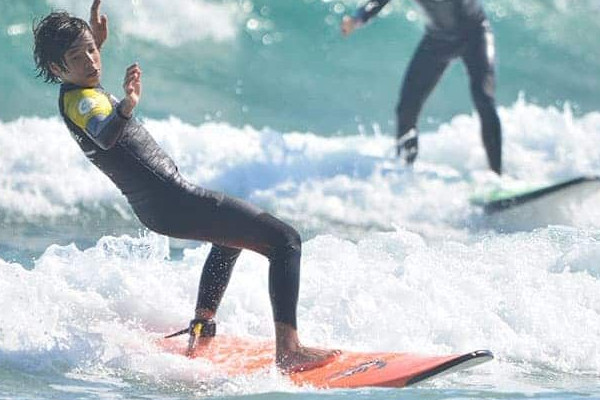
Protect your head
One of the most common ways surfers injure themselves is when they are hit by their own surfboard.
When you have to jump off the board, as far as possible, jump as far as you can, and protect your head.
Try not to dive headfirst the first few times, especially when riding small waves in
shallow waters.
Keep a good distance with the other surfers in the area.
In the water, another common cause of injuries is collisions between two surfers surfing in the same area.
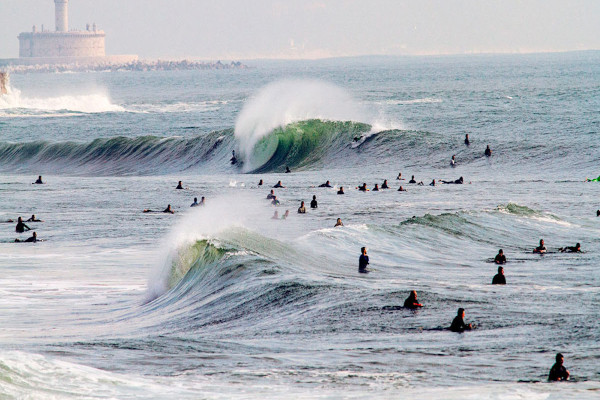
Avoid the impact zone
The waves have a characteristic behavior and usually follow a pattern. For new surfers it is often difficult to read what their behavior is.
A fundamental safety aspect in surfing is avoiding the impact zone. The impact zone is nothing but the place where the edge of the wave hits the water.
Getting caught in the impact zone results in being swept to the bottom, which can be dangerous depending on the size and strength of the wave.
Don’t panic
One of the most common ways to lose the ability to breathe is to panic.
There are times when some surfers stay up to 15 seconds without being able to surface to breathe.
If you follow all the recommendations for novice surfers, such as choosing the right spot, you should not spend more than three or four seconds under water, if you get caught by a wave.
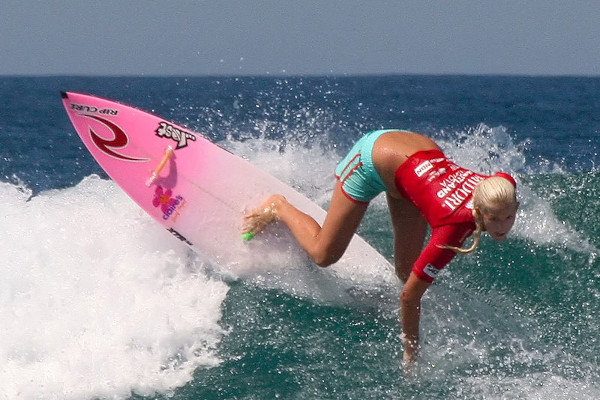
In an emergency, raise your hand and call your surf coach
In the event of any kind of emergency arising during a surf session, do your best to call your coach or a surfer friend on the spot as quickly as possible.
You should talk to your coach or a more experienced surfer friend about the alarm or distress signals in the water before a surf session, so that it can be clearly understood between the two of you, should any issues arise.
Don’t row against a rip current
It is also called a return current. It is a current generated by the irregular breaking of the waves, and it generally reaches the beach with a very high energy, and then fades to the bottom and then returns again to the sea.
The intensity of this current is linked to the height of the waves and the marine current is added to it, which makes it dangerous at low seas.
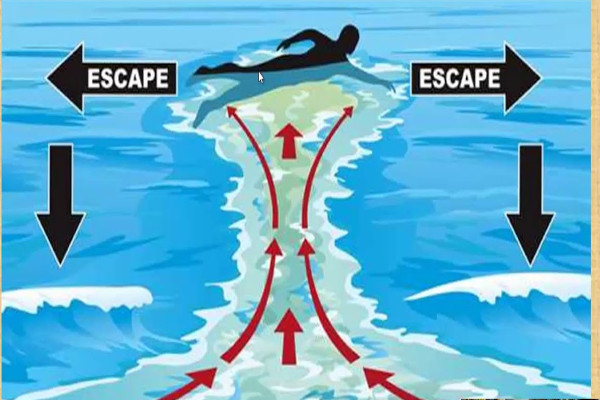
If you want more information about the rip current you can click on the link
Surf learning tip # 4- Learn about surfing rules and protocols
There are many rules for surfing sessions, and how you should behave in relation to other surfers in the same place, such as:
Don’t get in front of another standing surfer: Getting in front of surfers riding a wave is the quickest way to get into trouble with other surfers. You must take into account the right of way.
Do not row in the form of a snake: Rowing repeatedly around someone to beat a wave is not correct. If everyone did the same it would be chaos.
Don’t hog the waves: Rather share. Even if you can paddle further and catch the waves first, every time you hit the lineup, don’t. People will quickly become annoyed with this type of behavior and will simply stop giving you a chance.
Apologize: If you accidentally fall on someone or get in the way of another surfer, feel free to apologize.
All of these rules may be a bit confusing when you’re new to surfing, but it’s important that you know them and put them into practice.
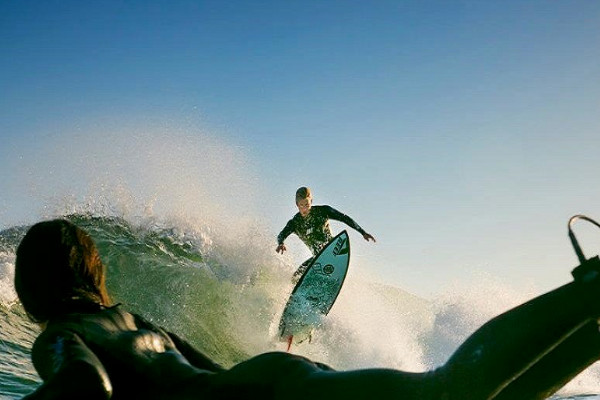
Tip to learn surfing #5- Find out about the spot where you are going to surf
The sport of surfing can present many difficulties such as strong currents or dangerous rock formations.
For this reason, we recommend that you do a preliminary investigation of the place where you are going to surf
It is not advisable to go directly to the beach without paying attention to the potential dangers that it may present.
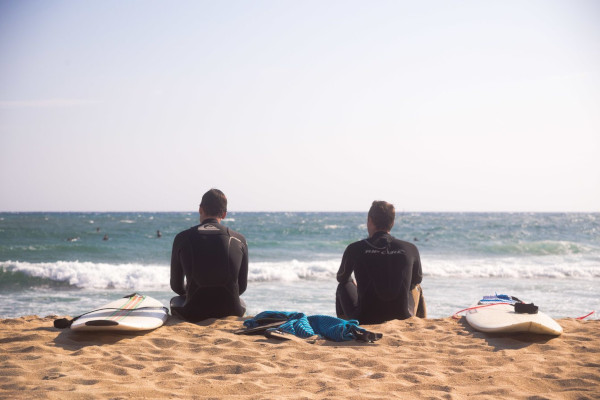
Surf learning tip # 6- Learn to master your surfboard
One of the things beginners have to deal with is being in control of the board once they are in the water.
When you are entering the water, hold the surfboard by its nose and keep it perpendicular to the waves.
This will prevent your surfboard from bouncing towards you when the waves are coming.
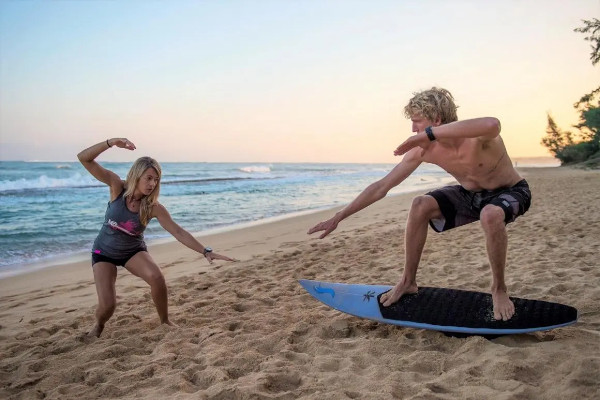
Surf learning tip # 7- Work on your rowing technique and your lifting technique
During the first few days of your learning to surf, your training will likely focus on your rowing and standing technique.
Although rowing may seem like a very simple thing, there are some crucial elements that you must understand in order to improve your performance.
Once you can handle the basic techniques, the amount of waves that you will reach to surf will increase in a significant way.
When you learn your rowing technique well, your next step will be to improve your standing.
The good thing about practicing the standing technique is that you can practice it at home, before going into the sea.
Once you have mastered the technique, applying it in the sea will be more natural for you.
Surfing is a fun and exciting sport. We hope that these 7 steps are useful to you to know and encourage you to live this experience.
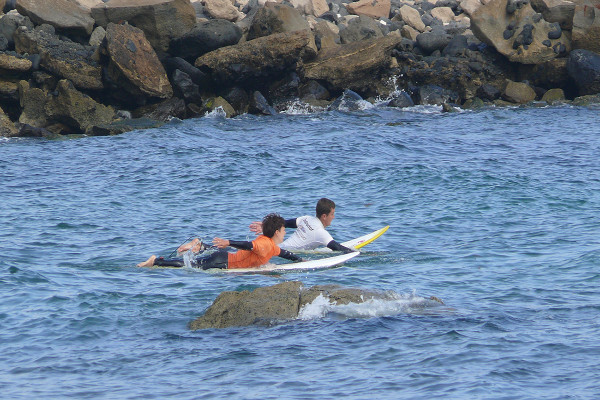
If you are interested in surf lessons of beginner, intermediate or advanced level you can click here
